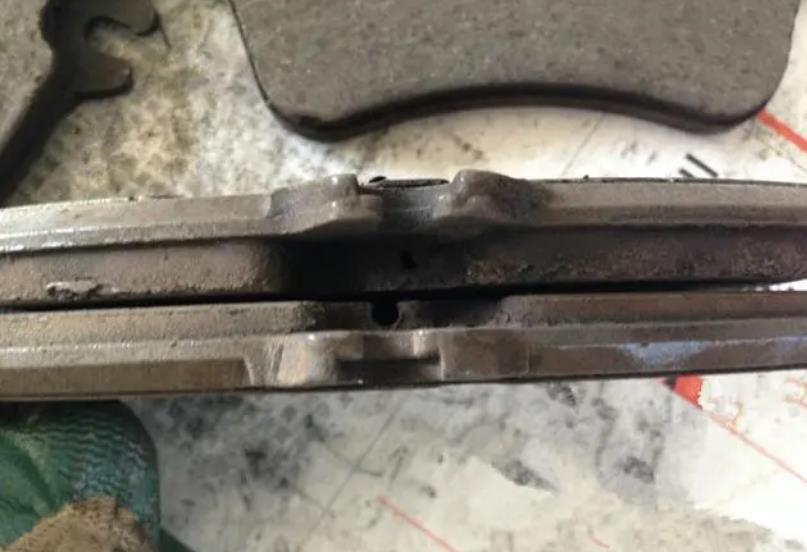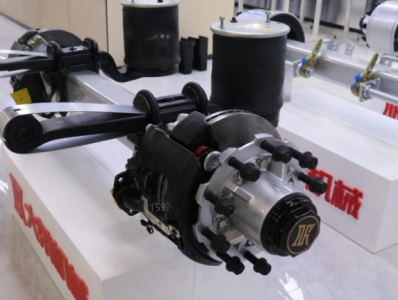How is vehicle brake pad partial wear a responsibility?
Brake pad is also called brake skin, is fixed on the vehicle brake assembly friction material, through the friction lining/friction block and brake drum/brake disc friction, to achieve the purpose of vehicle deceleration.

Brake pad partial wear is a lot of owners will encounter the problem. Due to the inconsistent road conditions and speed of the vehicle, the friction borne by the brake pads on both sides is not the same, so a certain degree of wear is normal. In general, as long as the thickness difference between the left and right brake pads is less than 3mm, it belongs to the range of normal wear.
It is worth mentioning that, with the continuous improvement of vehicle technology, many vehicles on the market are installed in the driving according to the actual needs of each wheel, intelligent distribution of power system, such as ABS anti-lock braking system /EBD electronic brake force distribution system /ESP electronic body stability system, improve the braking safety at the same time, Can also fully avoid or alleviate the brake pad offset wear problem.


Once the thickness difference between the two sides of the brake pad becomes large, especially with the naked eye can be directly and obviously distinguish the thickness of the poor, it is necessary for the owner to take timely maintenance measures, otherwise it is easy to lead the vehicle abnormal sound, brake jitter, serious may also lead to brake failure, affect driving safety.
Most of the time, brake pad partial wear not only need to replace the brake pad, but also need to find out the reason, targeted maintenance. What are the common causes of partial wear of brake pads on both sides of vehicles?
1, brake pad material is different.
This situation more appears in the replacement of one side of the brake pad on the vehicle, because the brake pad brand is inconsistent, it is likely to be different in the material and performance, resulting in the same friction under the brake pad loss situation is not the same.
The solution:
When replacing brake pads, try to choose the original parts or choose the same material and performance parts.
It is recommended to replace both brake pads at the same time, not only one side, of course, if the thickness difference between the two sides is less than 3mm, you can also only replace one side.
2. Vehicles often run curves.
This belongs to the normal wear category, when the vehicle bends, under the action of centrifugal force, the braking force on both sides of the wheel is naturally inconsistent.
The solution:
Vehicles that often take curves need to improve the frequency of maintenance. If the thickness difference between the brake pads on both sides is obvious, the brake pads need to be replaced in time.
In the long run, if the budget is sufficient, it is recommended that the owner install auxiliary braking system, reduce the speed of brake pad wear, prolong its service life.

3. Single brake pad deformation.
In this case, abnormal wear is very likely.
Solution: Replace the deformed brake pads.
4, brake pump return inconsistent.
When the brake pump is inconsistent, the owner will release the brake pedal, braking force can not be released in a few seconds, although the brake pad by less friction, the owner is not easy to feel, can lead to excessive wear on the side of the brake pad in the long run.
The solution:
The cause of the pump return problem is generally divided into two kinds: guide pin stuck, piston stuck, brake pad replacement only need lubrication can be solved, it is recommended to clean up the original grease and dirt, and then reapply grease.
When the piston stuck, you can use the tool to push the piston to the very inside, and then gently step on the brake to push it out. The cycle is three or five times, so that the grease will lubricate the pump channel. When the pump is not stuck, it means that the pump has returned to normal. If the operation still does not feel too smooth, it will need to replace the pump.
5. The braking time of the brakes on both sides is inconsistent.
The braking duration of the brakes at both ends of the same axle is inconsistent, which is also one of the reasons for brake pad partial wear. It is generally caused by uneven brake clearance, brake pipeline leakage and inconsistent brake contact area.
The solution:
Check the brake line immediately for air leakage.
Re-adjust the brake clearance on both sides.

6, the telescopic rod water or lack of lubrication.
The telescopic rod is sealed by the rubber sealing sleeve. When it is filled with water or lacks lubrication, the rod can not expand freely, resulting in the brake pad after the brake can not immediately return, causing additional wear and partial wear.
The solution:
Overhaul telescopic rod, discharge water, add lubricating oil.
7. Inconsistent brake tubing on both sides.
The length and thickness of the brake tubing on both sides of the vehicle are different, resulting in inconsistent brake pad wear on both sides.
The solution:
Replace brake tubing of the same length and width.
8, trailer suspension problem caused brake pad offset wear.
For example,trailer suspension component deformation, suspension fixed position deviation, easy to affect the wheel end Angle and the front beam value, resulting in the vehicle chassis is not on a plane, causing brake pad bias wear.
Solution: Fix or replace the trailer suspension.







